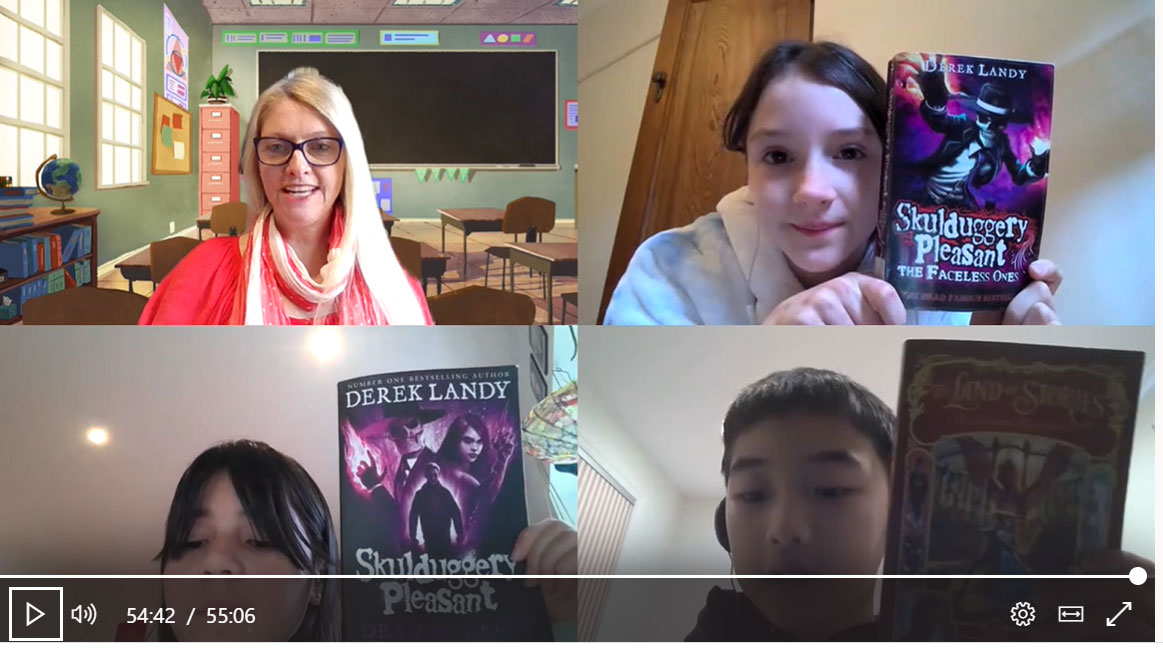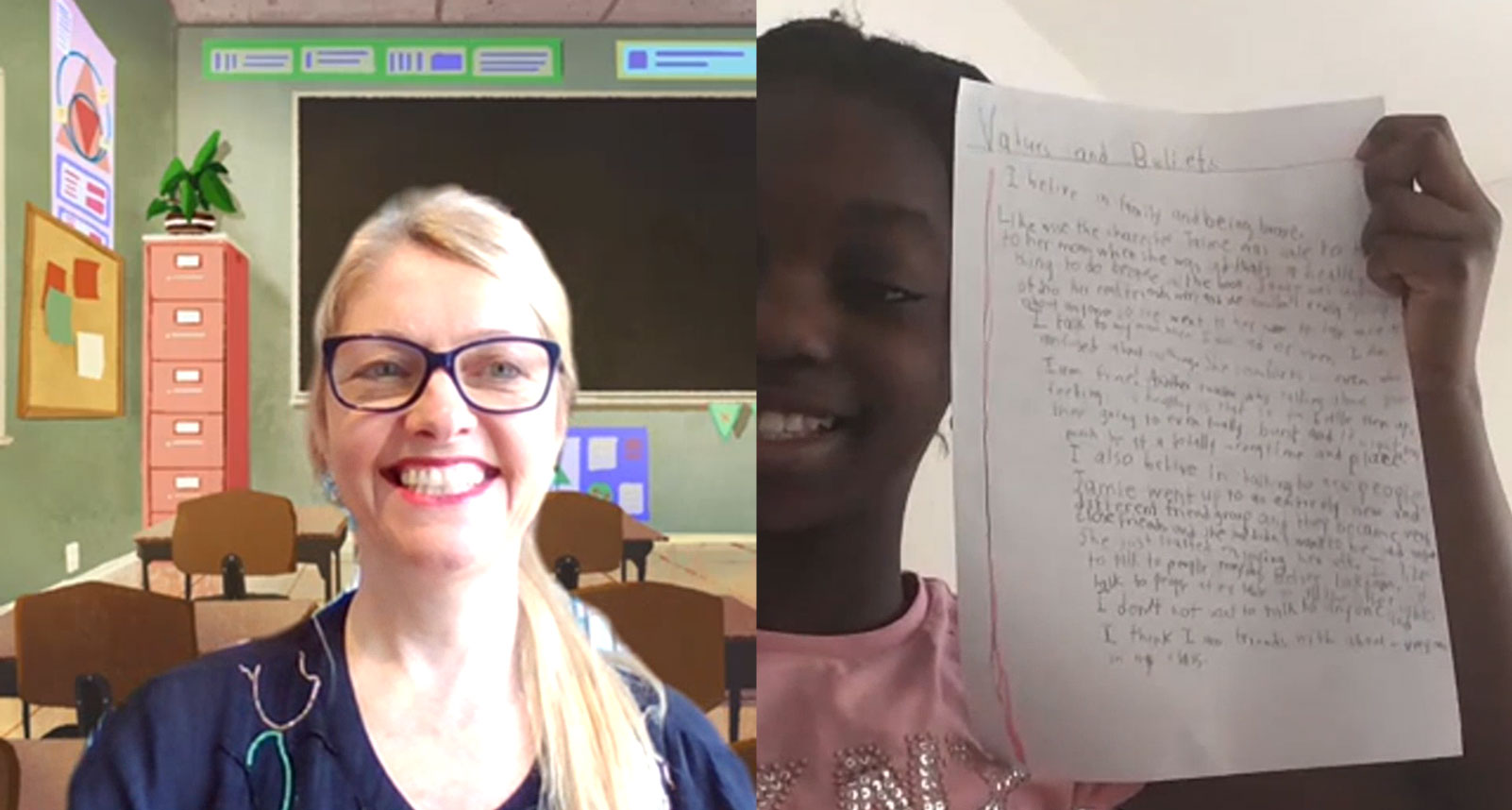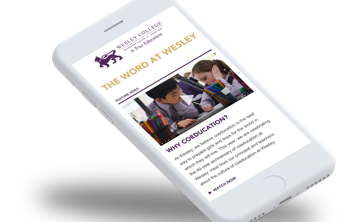Students making authentic text-to-self connections during the Melbourne lockdowns

Remote learning brought about considerable shifts in teaching practice for Wesley teachers. Lanella Sweet explains how she kept her students engaged and how they created connections between what was happening around them and what they were discovering in class.
The COVID-19 pandemic brought about a considerable shift in my pedagogic practice. This shift occurred last year, 2020 and by the time August 2021 arrived, the ability to quickly adapt between remote and face to face was part of everyday teaching. It was necessary to ensure that my students were able to successfully engage in rich, interesting literacy learning. My new context was my home, planning and implementing live synchronous lessons for my students.
The Australian Curriculum asks students to make authentic connections between text and their own life worlds. They do this by reading and viewing a range of different texts to connect what they are reading and viewing to events that have happened to themselves. This is commonly referred to as making a text-to-self connection. An example of this type of connection might be, ‘This story reminds me of a holiday I took with my grandparents at the beach last summer.’ The benefit of students making a text-to-self connection is a strong understanding of meaning by means of the activation of prior knowledge, the drawing of inferences and the synthesizing of ideas. According to Parr & McNaughton (2014) making authentic text-to-self connections provides students with knowledge when comprehending and composing texts. Even during remote teaching and learning, authentic text-to-self connections and experiences of students continued to take place.

The power of a connection
The new context enabled me to provide opportunities for students to have extra time to hunker down and engage with a range of new texts. I noticed that they were very eager to talk about the books they had self-selected. To foster these meaningful conversations, we divided into small groups to promote opportunities for open communication and discussion. I found my students to be positively engaged, involved in talk, and willing to share their thoughts and opinions. Conversations took place with cameras and microphones turned on, to enable as close to real life discussion and collaboration as possible.
Enabling connection in a remote classroom
I established a structured scaffolding system to encourage natural curiosity and varied conversations about the students’ ‘passion’ books.. This system promoted opportunities for students to talk, question, wonder, interpret, respond, and make connections to lived experiences.
Interestingly, many students made text-to-self connections to book characters that appeared significantly different to themselves. For instance, one student made a connection to the personality traits of the character of Jasmine from Emily Rodda’s 2012 book, Deltora Quest,. She stated, ‘Jasmine is dissimilar to me because she is hot headed and defiant and did not listen to her friend Leaf. I am a calmer and more considered person and if somebody doesn’t agree with me, I will communicate my message in a polite manner to ensure my thoughts are articulated nicely.’
Another student recognised that the strong, confident adventurer Attica Stone from Mat Larkin’s The Orchard Underground (2018) was different to her quiet and reserved nature. The character of Valkyrie from Derek Landy’s Skulduggery series was recognised as showing strong emotions in feeling ashamed. The student compared the two characters and unpacked strong evidence and examples, noting these these responses were different yet similar. Other text-to-self connections were based upon characters’ personal interests, strengths, and even occupations in books such as Mary Poppins (Travers, P. 1934), Harry Potter (Rowling, J. K. 2013), Timothy Failure Mistakes (Pastis, S. 2013), The Land of Stories - #3 A Grim Warning (Colfers, C, 2014) and Dear Dumb Diary (Benton, J. 2013).
This character is like me!
To help students actively engage in making text-to-self connections I provided opportunities for students to collaborate, discuss, provide feedback, establish guidelines and engage in both verbal response and structured written tasks. Students made different types of text-to-self connections, including the following:
Social and personality
- The character of Jamie is brave enough to talk to people she doesn’t know, I am similar as I moved to Wesley a year and a half ago and needed to feel confident to make new friends, which I did!
- This character is like me because we are both quiet at school and secretly loud at home.
- The character of Conner demonstrates strong social skills, making jokes and cheering everybody up, but I would be more serious in these situations, thinking about the big picture.
Family structures and living arrangements
- This character is just like me as I have one brother and like to look after him.
- This character is very different because he is from a large family and I’m an only child, which makes me reflect and think about my family unit.
Underlying values and beliefs
- The main character is loyal and believes in strength of family, just like me.
- The character doesn’t think before she acts, which demonstrates risk-taking behaviour, which I don’t relate to, as I am cautious and aware of consequences.
Physical features and physical abilities
- This character is tall and lanky, and can jump, and has similar attributes to my athletic skills.
Community context
- Does this character go to school, like me? Does this character live in a local community, like mine? Does this character have a different or similar lifestyle to me?
Personal interests and strengths
- This character has opposing views and perspectives when dealing with peers and adults around him. I consequently don’t relate to this self-centred manner.
- This character is creative and loves to write in a diary, like me, which is something I can relate to and understand in order to make sense of the world around me.
Providing opportunities for students to make these different types of text-to-self connections in authentic, meaningful ways facilitated deep thinking and reflection, and developed comprehension skills (Smiles, 2008). Through discussion and sharing of ideas, students were able to listen to their peers’ thoughts and opinions and watch them make connections with their text. This built confidence in other students to make their own connections to texts. They happily made efforts to summarise, question, predict, make inferences and suggestions, and use their prior knowledge to make connections about themselves and their favourite characters in texts.
Many students are happy to discuss, respond to and make connections with their favourite texts. They want to talk about the similarities and differences between what they are reading and their own life worlds. Students were able to create rich connections, whilst comparing and contrasting elements of themselves and the text. I will continue to use text-to-self connections in my literacy teaching – remote or otherwise – as such engagements provided authentic passionate links and a most personal quality to the learning of all students.
Lanella Sweet is an Enrichment Teacher at the Elsternwick Campus
